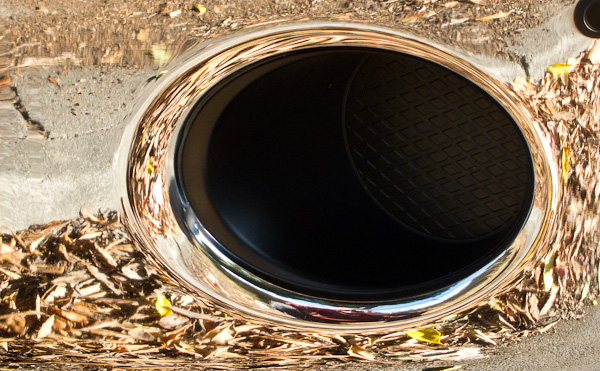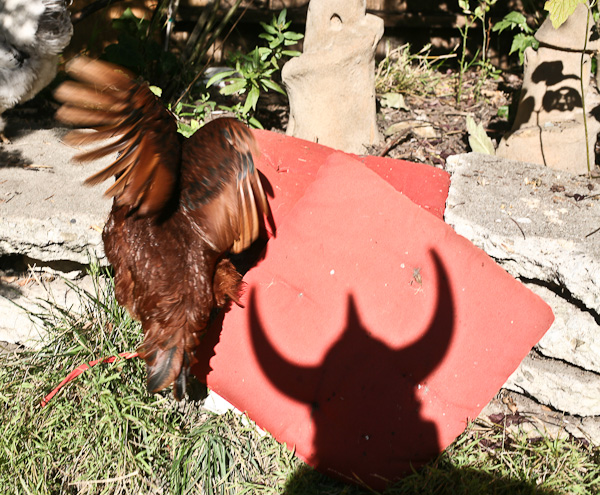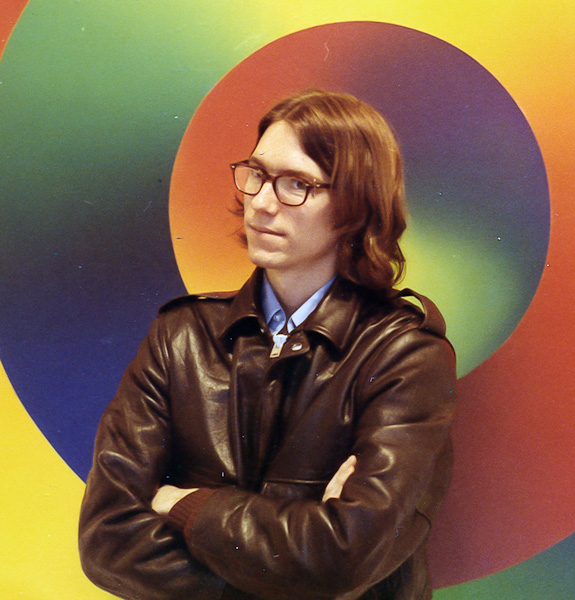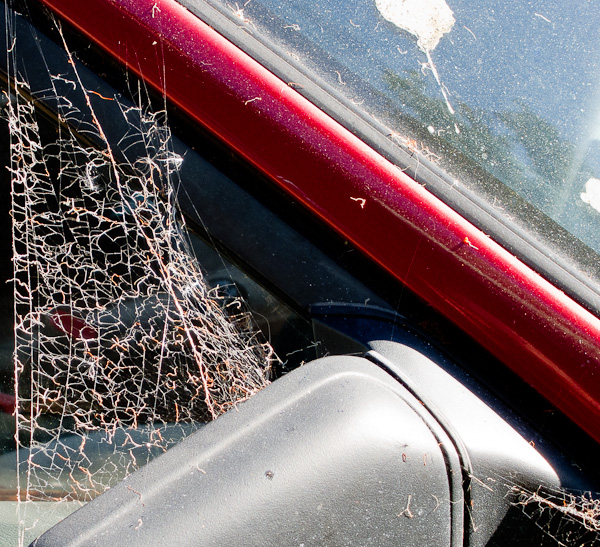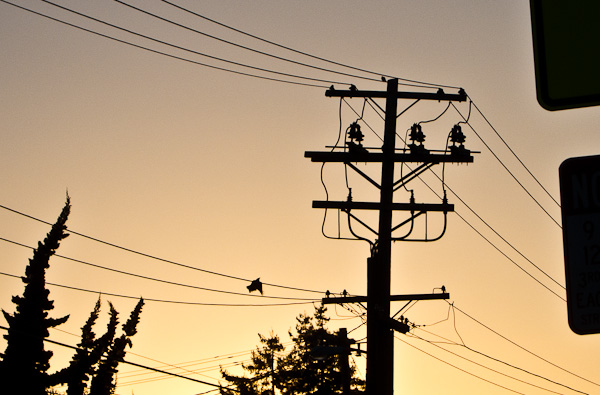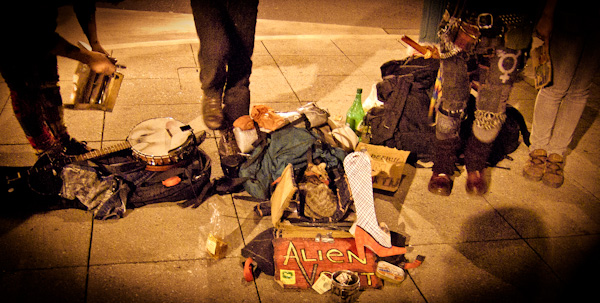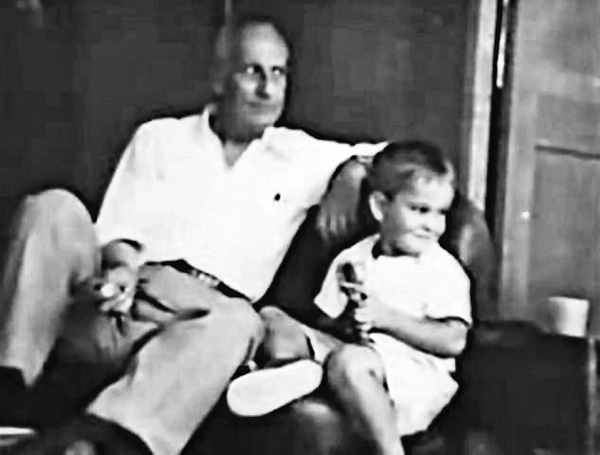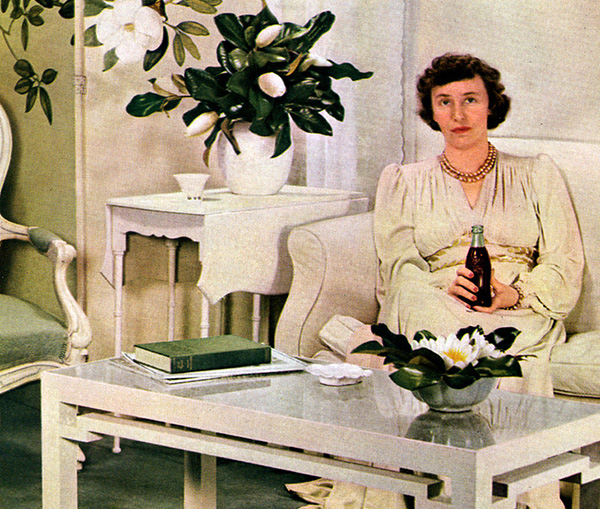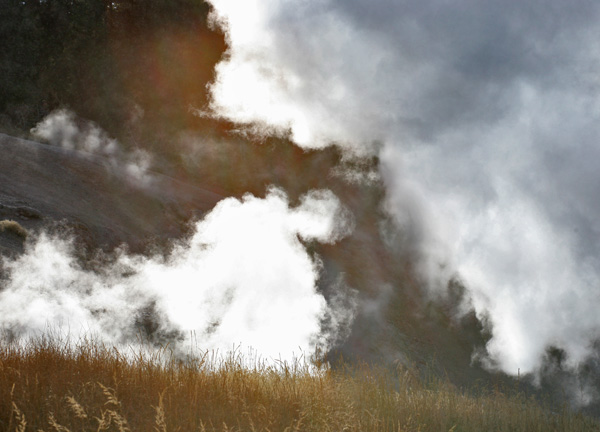One last post of photos from our September roadtrip through the Wild West. After Monument Valley, we headed south to Canyon de Chelly, pronounced like Canyon du Shay. You can find links to the complete set of Wild West posts here.
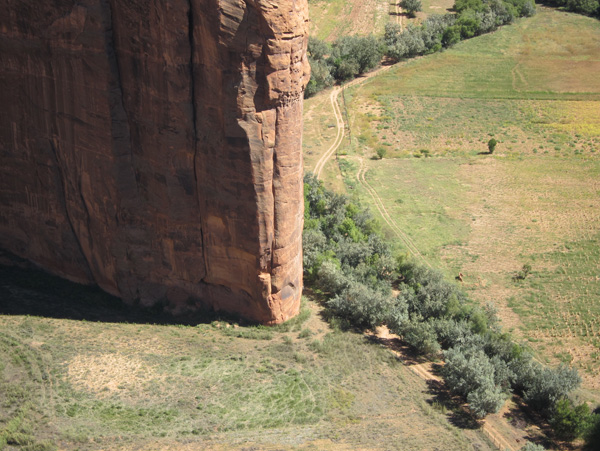
Canyon de Chelly is what you might call a box canyon, in that you can walk or drive in from the lower, open end, and its about a thousand feet deep at the upper end, which is maybe twenty miles in.
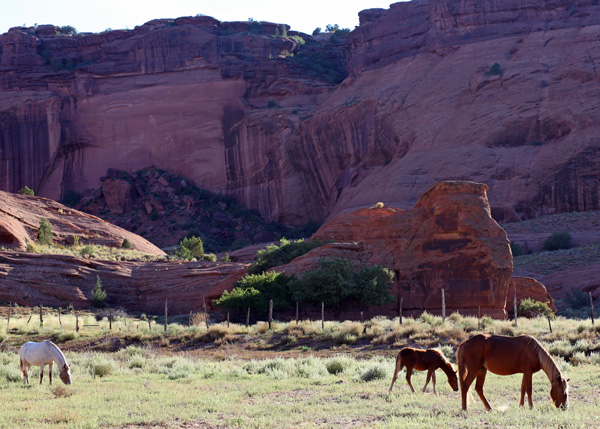
Unlike the kind of canyon that has a river in a rocky gorge at the bottom, the Canyon de Chelly is fairly flat at the bottom; it floods every year, and there’s a smooth later of rich soil. People have lived and farmed in there for a very long time—in fact this may be the oldest continuously inhabited spot in the US.
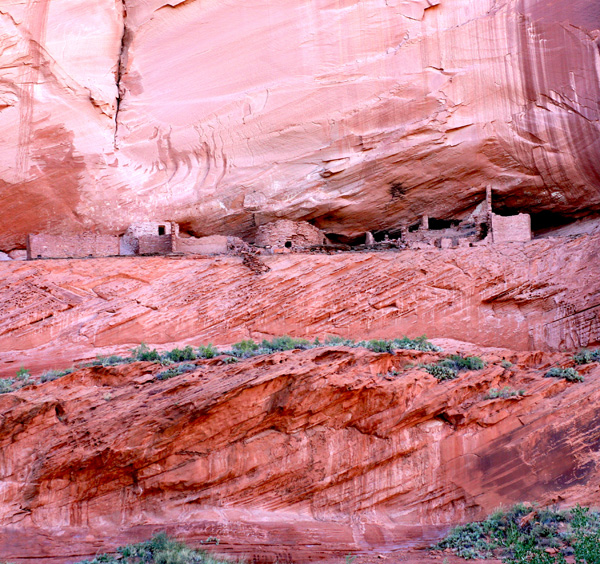
The present inhabitants tend to move out during the spring months when it floods, but in the old times, the natives dealt with this by putting their homes in big cracks of the sheer cliffs.
We stayed at the nearby Thunderbird Lodge—a nice thick-walled motel built around a former trading post. The Lodge runs tours into the canyon, but they didn’t look too comfortable; you sit in a chair on the back of a large flatbed truck with no shade. For about the same price, we got a Navaho guide to take us on a jeep tour, just her and Sylvia and me.
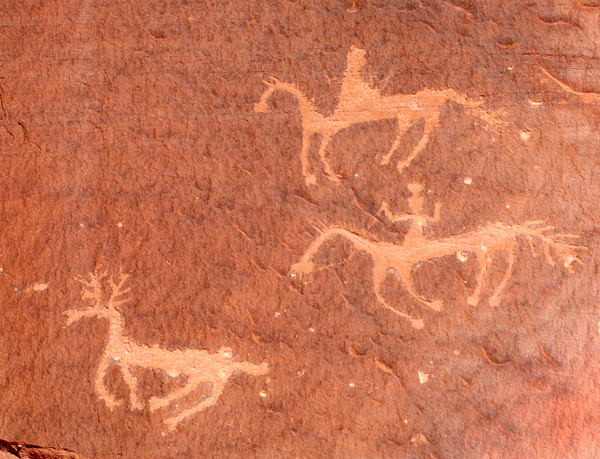
She was a lively, talkative sort, and told a lot of interesting things. She’d been off the rez for many years, but was back now, and living with the Navajo owner of the small tour company.
The canyon reminded me very much of the fictional “Hormiga Canyon” that I wrote about in 2007 with Bruce Sterling in 2007. This story made the cover of Asimov’s SF Magazine, even though the text itself isn’t online. I told the guide a little about the story, and said I was hoping we might come across some giant ants. She appreciated the idea.
As we got deeper into the canyon, it started feeling ever-heavier and more spiritual. As we looked at the ruins of some cliff-dwellings, a big raven coasted past. It was so quiet in the canyon that I could hear the air on the feathers of his wings.
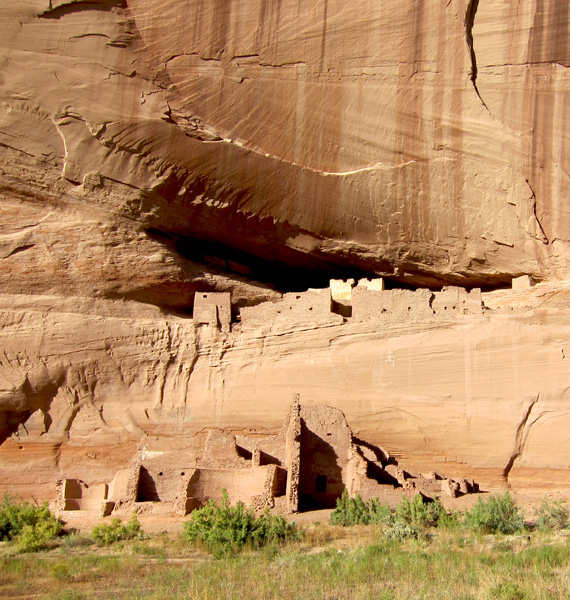
I’d heard that the Navajos are still into taking peyote, and I asked our guide about it. She said, yes, it was common, more among the men, and that the man she lived with was in fact a psychic guide, what they call a peyote road man. There’s even a legal exemption that allows Navajos to possess and use peyote, based on membership in the Oklevueha Native American Church.
Our guide mentioned that they have go down to Texas in order to get the peyote, which grows wild along the banks of the Rio Grande River, and this can be problematic, as the legal exemption isn’t necessarily honored by the Texas state authorities.

This all reminded me of the fall of 1965—forty-five years earlier—when I myself had taken peyote. I mentioned this to our guide, but she didn’t want to have that conversation.
The sun was setting as we drove back out the mouth of the Canyon de Chelly. Some wild dogs appeared by the jeep barking at us. The guide said, “I’ve never seen those guys before.” The sun was shining into my eyes, lighting up the crannies of my brain.
“This has been great,” I said. “We saw the giant ants, the dwellings of the Old Ones, the Magic Raven, and the Secret Dog Guardians are ushering us out!” She laughed. It was an amazing trip.
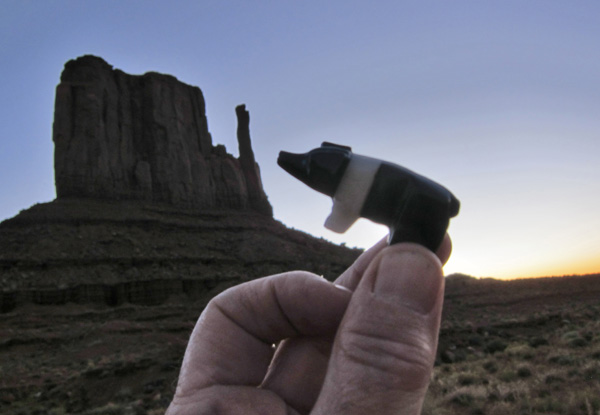
Rooting around today as I make this blog post, I found the manuscript of a memoir I wrote in 1983, All the Visions, typing it in a continuous session in one giant paragraph on an eighty-foot-long roll of paper. The book appeared from a small press in 1991, and is still available on Amazon, mostly in used editions. I might do an e-book release of it sometime this year. Anyway, here’s an excerpt of the parts about my peyote trip in 1965, when I was a junior at Swarthmore College.

This upperclassman Freddy had these round steel-rimmed glasses, and always an unbuttoned button-down collar shirt with the sleeves rolled high up over his elbows, the elbows jerking out to the sides make room, make room, chuckling and working on incomprehensible letters to like the FBI to leave him alone, or studying, frame by frame, a Marvel Comic. “This one is about a trip, man, you see how the guy gets on the abandoned subway and it’s full of monsters?” That was indeed the trip I got one morning in 1965 when I fell by Freddy’s room, looking for excitement, and he gets out a cardboard box of peyote buds.

“These come from Texas, the Wild Zag Ranch, you send off for them, they’re still legal. Spit out the hairs when you chew, the hairs have strychnine.” I’m chewing the stuff, feeling myself passing through another interface, this is real. Freddy was making me nervous, jerking his elbows and peering at me, so I went down to the lobby to phone Sylvia, off at grad-school in Connecticut. But I took some wrong turn and I’m on that subway with the monsters, right in the front watching the ropey tooth-monsters coming at me in waves, brown and yellow all down the sides of a black-green tunnel. And waves of like contraction are sweeping over me, waves and monsters.

At some point I realize that what I’m doing is throwing up into a waste basket and staring at the vomit patterns, I’ve been throwing up for like a half hour maybe. “You have to get help,” I think, and the thought repeats in my head in tiny speed-up voices, help help help, then shatters into wicked laughter, it’s just like the nightmare I had over and over when I was tiny: A circus lit up by darkly smoldering torches. High overhead fly the acrobats, creatures of light, devils. I run up stairs and hide behind a pile of doors. There’s no pile of doors now, though just the empty midday street, college-town empty, and the leafless leaning trees are clawed hands over the street. “Relax, Rudy, it’s just the drug.” Relax, pipe the head-voices, relaxlaxlalahahahahahahaaaaaaa! Nobody in my room, I still room with Kenny Turan, we have a double this year, and everything…looks like a face, the sink chuckle chuckle, the wall snf snf, the door helloooo.

I run out and find finally a house with friends, three or four of them, trying to explain, but they soon get the picture, and now everything is all cut up, memories from the past and future, suddenly I’m already a college professor lecturing on relativity, sitting at the table talking or making noises as my friends solemnly watch, how I love them! Then into the living room, this shit is like being shot out of a cannon, if I close my eyes I’m a pinball in a high-score game, and if I open them, “I’m in a Renoir!” My voice sounds sweet and sticky, but I have to tell it. “I’ve always loved Renoir, and now everything looks like one of his paintings!” “Where did you get this stuff, Rudy?”

My friends Rob Lewine and Don Marritz escort me back to my room, and I sit on a chair in my room, looking as Rob’s face changes click-click-click the whole history of western art, primitive, cubist, impressionist, comic, click. Outside some trees still have their leaves, red and yellow, I close my eyes, I’m in my head with flecks of blue red yellow, a big balloon of color floating up higher and higher from the earth, a thinner and thinner tube connecting me back to earth and “It’s going to break!” I cry in panic, the thread is going to break and I’ll be dead. “No, no, just relax,” says Don. “Promise me that if I stop breathing you’ll wake me up.”

Later my keepers tire of me and set me loose again, I go up to my friend Greg Gibson’s room and try to tell him about it. “You been freaking out?” he muses, looking at me, then hunches over like an evil caveman to snarl and threaten. “Don’t,” I scream, “My brain will pop!” He relents and we go to supper. The next day I go to New York to visit with Sylvia at the apartment of one of her friends—who’s idea of a fun thing is that we all get on the subway and…run up to the front car and stare out (oh no) at the black tunnel ahead with the ropey tooth-monsters only I can see. Coming back to my dorm after the weekend, I keep looking at my hands to see the flesh fall off and the bones, the skeleton. Wow. There’s no trip like that first one, not that I was real eager to take peyote again.

Peace, brother.
